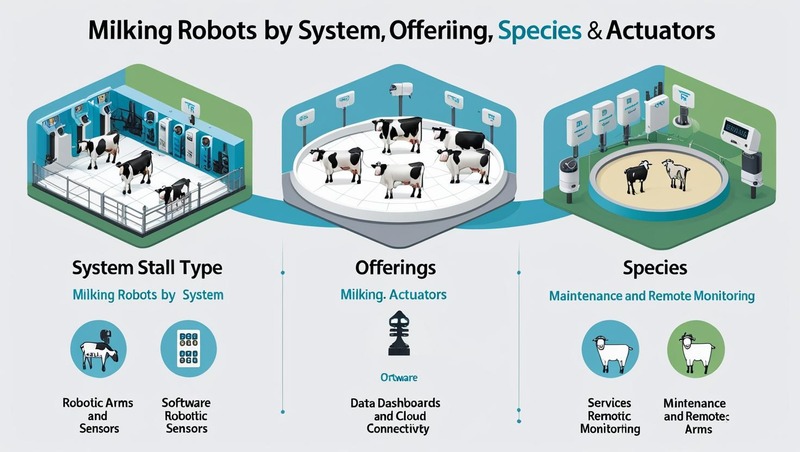In 2025, dairy farming is undergoing a radical transformation driven by the rapid adoption of milking robots. These automated systems are no longer futuristic novelties; they are becoming essential components of modern dairy operations. Milking robots are addressing labor shortages, enhancing milk yield, and improving the overall well-being of both cows and farmers. This shift is not just about automation—it represents a smarter, more data-driven approach to dairy production.
One of the primary reasons for the surge in adoption of milking robots is the growing challenge of labor availability in rural areas. Traditional milking requires intensive manual labor, often at odd hours, and consistent manpower is increasingly difficult to find. Milking robots offer a solution by allowing cows to be milked autonomously, often two to three times a day, improving both efficiency and consistency. Farmers can redirect their focus toward herd management and data analysis rather than manual milking routines.
Download PDF Brochure @ https://www.marketsandmarkets.com/pdfdownloadNew.asp?id=170643611

Milking robots also bring significant benefits in terms of animal welfare and milk quality. Cows have the freedom to choose when to be milked, reducing stress and encouraging natural behavior. These systems also include built-in sensors that monitor vital parameters such as milk conductivity, udder health, and cow activity levels. Real-time data collection and analytics provide early warning signs of illness or production anomalies, allowing farmers to intervene promptly and avoid losses.
In 2025, connectivity and integration with broader farm management systems have taken center stage. Milking robots now operate in tandem with automated feeding systems, climate controls, and herd tracking technologies, creating a fully connected smart dairy farm. Cloud-based platforms allow farmers to monitor operations remotely, making real-time decisions and adjustments from a smartphone or computer. This interconnected ecosystem is not only optimizing productivity but also enabling more sustainable and environmentally friendly practices.
Despite the upfront cost of investment, milking robots are proving their value through long-term returns. Increased milk yield, reduced labor costs, and improved herd health contribute to a faster return on investment. Governments and agricultural organizations across the globe are offering subsidies and support to promote the adoption of precision dairy technologies, further driving the momentum.
As we look ahead, the outlook for milking robots in 2025 is highly promising. With continuous improvements in AI, machine learning, and robotic engineering, these systems are expected to become even more efficient, user-friendly, and accessible to small and medium-sized farms. The future of dairy farming is undeniably robotic, and the revolution is already underway.
